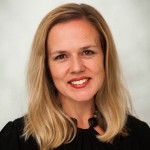I laughed when Meris Stansbury from eSchool News opened her review of our new white paper, titled “The rise of K-12 blended learning: Profiles of emerging operators” by asking “but who has the time to compare and contrast these programs for an analysis of what blended learning means today?” Indeed, now that the long report is published, I wonder myself how we all found the time for such an undertaking.
The process began by interviewing a panel of online-learning researchers from academia, consulting firms, and the investment community. They identified over 60 organizations that they thought might be leading the way with blended-learning initiatives. From those, we selected the 40 organizations that were most engaged in blended learning. Then Matthew Clayton, the master of the cold call, tracked down the leaders at each organization who could best speak about their blended-learning initiatives. We conducted a series of interviews and conversations with these leaders to develop each organization’s mini case study. In some instances this process involved site visits as well.
Eric Chan at the Charter School Growth Fund developed the profiles for the three organizations in the report that are part of its investment portfolio: Rocketship Education, Chicago International Charter School, and KIPP LA. Katherine Mackey of Innosight Institute abridged two beautiful case studies she had written previously: VOISE Academy and Wichita Public Schools.
Why make the effort? At its core, the white paper is intended to help improve the lives of children. If even a handful of kids is spared from the cramming of low-quality high-tech clutter into their classrooms or exposed to the best that online learning has to offer, this study is a success. Our goal is to channel innovation to greater quality in an effort to transform the school system into one that is authentically student centric.
To that end, the paper contains information that helps provide a clearer picture of blended learning for school and district leaders, state policymakers, entrepreneurs, investors, and philanthropists. It provides a view from the trenches to show what blended learning looks like, close up, in 40 implementations. Each profile offers a snapshot of the student demographics, technology tools, blended-learning model, and notable results. Educators, policymakers, and investors can spot trends and begin to identify what works by glancing at the big picture.
As I stood back to survey the big picture myself, I remarked that some of the organizations in the paper are pioneering exemplary blended programs and are on track to bring about disruptive innovations that will make the system more affordable, individualized, and competitive. But some of the programs are rather unimaginative and low end. I hope that policy makers will take the crucial steps to set the right regulatory context for highest quality blended learning. This new approach to education should reward excellence, leverage teaching talent, and personalize the educational experience for students at all levels.


